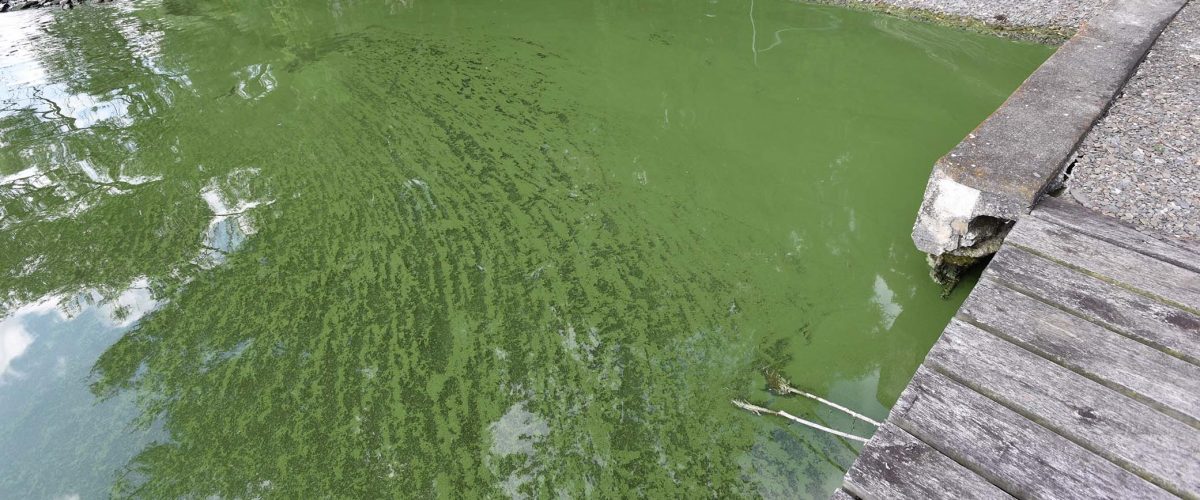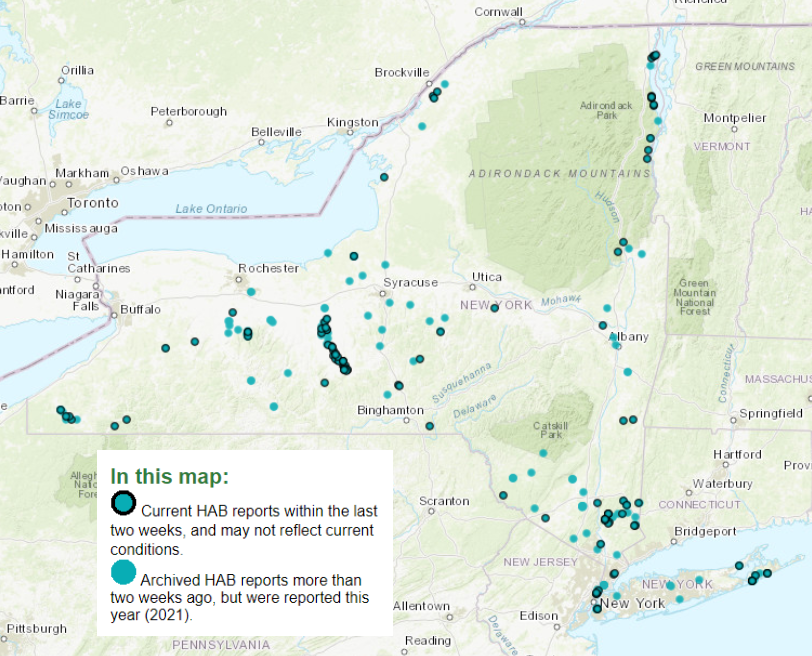Cayuga Lake’s HABs Season is Booming, Health Department Issues Warning

A harmful algal bloom that occurred on the southwest shores of Cayuga Lake on July 13th, 2019. (Community Science Institute)
ITHACA, NY -- Cayuga Lake is leading New York state in Harmful Algal Blooms this season, prompting a call for caution at the Tompkins County Health Department.
Cayuga Lake has had over two dozen toxic blooms this year according to reports collected by the Department of Environmental Conservation, or DEC. The toxic blooms can look like green mats, or even like paint floating in the water. Water Front wrote that nearby water bodies have yet to report their first.

This map shows HABs citings reported in New York in 2021. The cluster of dots in the center of the map are HABs citings in Cayuga Lake. (NYHABS)
The height of HABs season is in August and September, so the worst of these toxic blooms are likely down the road. The early high tally of these blooms has prompted the Tompkins County Health Department to put out a warning to residents about the dangers of toxic algae.
The County Health Department recommends that if you come in contact with the algae, rinse yourself thoroughly with clean water, and seek immediate medical attention if symptoms set in. Contact or ingestion of water containing the toxic algae can cause nausea, diarrhea; skin, eye, or throat irritation; difficulty breathing; and vomiting.
These early blooms come as the DEC’s draft plan for addressing HABs in Cayuga Lake is being publicly criticized. The plan is called the Cayuga Lake Total Maximum Daily Load (TMDL) for Phosphorus in Cayuga Lake. The recommendations come down to reducing phosphorus loads in the lake by 30 percent.
Assemblymember Anna Kelles called the data the DEC used to support its study outdated. The timeline of the study also extended past the federal guidance of an 8 to 13 year window; it took 19 years for the DEC to complete the work.
Water Front reports that the plan doesn’t delve into the possibility of phosphorus running off into Cayuga Lake from large dairy farms. The DEC’s assumption is based on the permits they issue to Confined Animal Feeding Operations (CAFOs), which do not allow the discharge of water from those operations in the first place, and any nutrients applied to the soil are done so at approved, agronomic rates.
The plan also does not acknowledge other factors that contribute to HABS, like nitrogen pollution, and does not make any recommendations of how to reduce phosphorus.
The Community Science Institute (CSI) is one of the organizations which the DEC draws their Cayuga Lake HABs data from. CSI is also on the list of critics for the DEC’s TMDL Plan. To report a HABs sighting on Cayuga Lake you can go to the Community Science Institute’s website.
